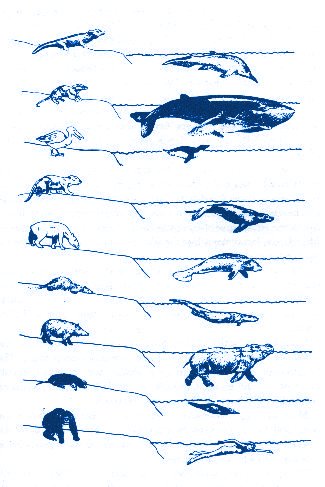
Illustration courtesy Elaine Morgan 1982
This is not completely unseen, in fact many terrestrial mammals have returned to the sea: whales, dolphins, sea lions, otters, beavers etc. All of which had to adapt and change.
It can be argued that what we should be looking for in order to solve the puzzle of mankind's evolutionary environment, is features of convergent evolution in other species. If we do so we find that indeed we do align with the semi-aquatic mammals in many ways!
The human attributes which set us apart from all other primates and all other "grassland" dwellers and align us with aquatic and semi-aquatic mammals are: bipedalism, conscious breath control and speech, greatly reduced body hair, subcutaneous fat, and increased brain size. What kind of environment would demand these changes?